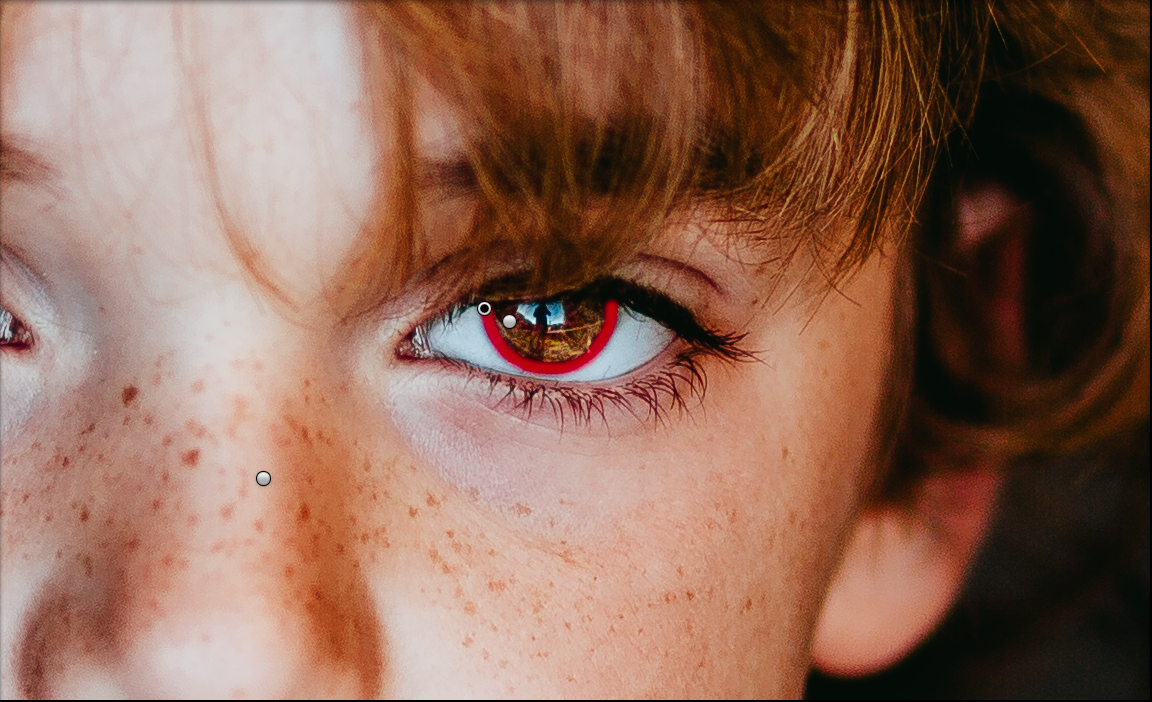
You will need to just focus on the overall curve as you make your adjustments. One important thing to keep in mind is that when you have sharp differences in the image's exposure - for example, a very bright background compared to darker foreground - the curve will reflect that disparity with spikes on parts of the curve. While using the sliders, you can watch the curve in the histogram to arrive at the correct exposure and balance. Just slide to the right or left on the slider to adjust the exposure. You can use the exposure's slider to make the necessary adjustment.
#How to make brown eyes pop in lightroom skin
Incorrect exposure will alter the skin tones to be too dark and gray or too blown-out. If your curve's peak is too far to the left or the right, you will likely need to make some adjustments to your exposure. Ideally, the peak should be in the center of the bell curve. You can do this by checking the histogram and checking its curve.

Again, the toning effect is easy to recreate in Lightroom. Day and Maynard White in sailor suits by F. A warmer, sepia like treatment would contrast with the subjects and create a different feel.
#How to make brown eyes pop in lightroom professional
Exposure alone can make all the difference necessary for that professional look. My eye is pulled straight to the boys stare and the cold blues match its intensity. You'll likely need to work with the dropper, the slider, and even the tint to find the correct skin tone balance.Īnother step toward good skin tone in your photographs is to ensure proper exposure. There's a reason it's called the White Balance. Sometimes, you might also need to adjust the tint as well. You can then use the temperature slider to adjust the tone further if it remains too warm or too cool. It has a tremendous capability to make a photo black and white from color or vice-versa. Usually, Lightroom is thought to be a Photo Color Correction tool, but it has many other features to enhance photos. Click on it (looks like a dropper) then click on any white area of your photo. Lightroom usually works with color, tones, and highlights. Select the orange slider and begin to slide toward the right. In your HSL/Grayscale, click on the Luminance tab. To adjust the luminance, youll use the Luminance slider found through the HSL panel under the HSL/Grayscale.

In Lightroom, you can correct your white balance fairly quickly using the adjustment tool. Luminance: A good way to adjust skin tone is to work on the Luminance and increase the skins brightness. Unless that's the effect, you are working toward, neither will work and changes will be necessary. But, if the White Balance is to be too cold, you can expect a blue or grayish tint to your images. When the White Balance is too warm, the skin tone will appear too orange or yellow. It is the basis of great skin tone and setting it correctly is critical to achieving the correct skin tone in your pictures. White Balance:īefore you do anything else, it's important to consider and start with the White Balance. Here are a few tips you can follow to achieve better skin tone in your portraits and get that professional look for your work.


 0 kommentar(er)
0 kommentar(er)
